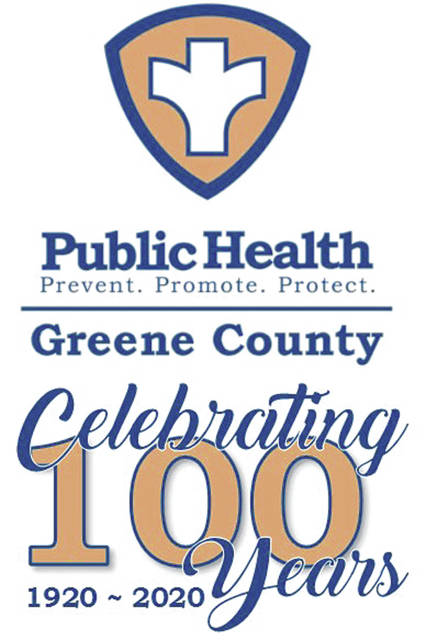

Editor’s note: This is Part II of this month’s Centennial Celebration series covering Greene County Public Health in the 1980s.
In January 1985, the first self-assessment of Public Health Standards occurred. In 1989, the first community health assessment was conducted. Mandatory peer-review was done between county and city health districts, however, they were not well received. An office of development was established to create and evaluate goals and measures approved by the Planning and Evaluation Committee.
The Personnel Committee specified that the agency’s legal name is the “Greene County Combined Health District” and that all identification of the “health department” should be changed to reflect the legal name. A new logo for the district was adopted in March 1982. The Planning and Evaluation Committee of the board of health drafted its first by-laws in 1983. Planning and Evaluation also set short- and long-term goals and created the first mission and value statements. In response to those goals, the health district employees drafted program work plans to meet those objectives. The board would assign members to approve and disapprove the activities. An end of year report was created and provided the “Annual State of the Health District.” In 1989 the board no longer required an oral report from the health commissioner and a written report was accepted. Questions about the report would be submitted by board members prior to the next meeting.
The board of health appointed the health commissioner as the registrar due to lack of funding. The county auditor requested a second line item for the salary of the health commissioner because the health commissioner was on a separate pay cycle. At the time, the health district’s total budget was $644,600 for 1981 which was a decrease from $1.75 million in 1980. In 1987, the health commissioner’s contract was approved with one dissenting vote and discussion was held regarding the “Appointing Authority” language in the contract. If an employee or board member is disgruntled, these are the tactics used to weaken the authority outlined in law, in by-laws and in contracts. The board was notified of the difficulty the district faced in keeping wages competitive. Letters were mailed to board of health members asking for the health commissioner to document time and attendance at meetings and committees so they could be paid for their service. Board members completed a meeting participation survey.
Greene County had its own classification plan however the health district participated in the Ohio Department of Administrative Services classification plan. Board members, by statute, could be paid for their service.
Four levy attempts failed, and the district was unable to increase funding from inside millage, which necessitated decreasing funding to home care services. In this same decade, consideration was given to running a “combined” human services levy much like Montgomery County was doing. The consensus was that voters should be given a choice to support whatever aspect of service they wanted individually and not as a combined levy. An office of development conducted numerous activities to raise funds for the district. Rummage sales, shirts, and cookbooks were created and sold to supplement funding. Employees were expressing concern about being pressured to volunteer their time for fund-raising activities.
The fiscal officer position was abolished. The Division of Personal Health was eliminated. As part of the reorganization, a new administrative services team and community health services team were established. Home Care and Ambulatory Care combined to form the Community Health Services team in October 1982. Medical Director Ray W. Barry died in 1983, which led the board to rename the dental clinic the Ray W. Barry Memorial Dental Clinic in his honor. The board gave its blessing for the health commissioner to hire a medical director.
Reductions in staff resulted in just 55 employees in 1982. Outlying clinics were closed except Yellow Springs. Financial data collection forms were used for clients. Further reductions left the health district with 27 employees. Of note is that other county employees received a 10-percent hike in pay the same year. Health district wages were studied by a wage and salary administration committee. Health insurance, previously paid at 75 percent employer/25 percent employee, was revised to 80 percent employer/20 percent employee. The general environmental health fund and the community health services fund was established in 1984. In 1985, an annual employee recognition banquet was discussed to be held in conjunction with the DAC meeting. In August 1985, employees selected their first employee of the month and again employees began seeking to form a union. The first Employee Recognition Banquet had more than 100 people attend.
The board established a trust fund to supplement district activities. The guidelines for the fund were that all funds generated would be through donations, fund-raising events, and general operating grants. The funds would support essentially any service where existing funds were being exceeded, and to support fund-raising. The Mitten Tree project was one function of the development office with contributions being made to support the project from board members and employees.



